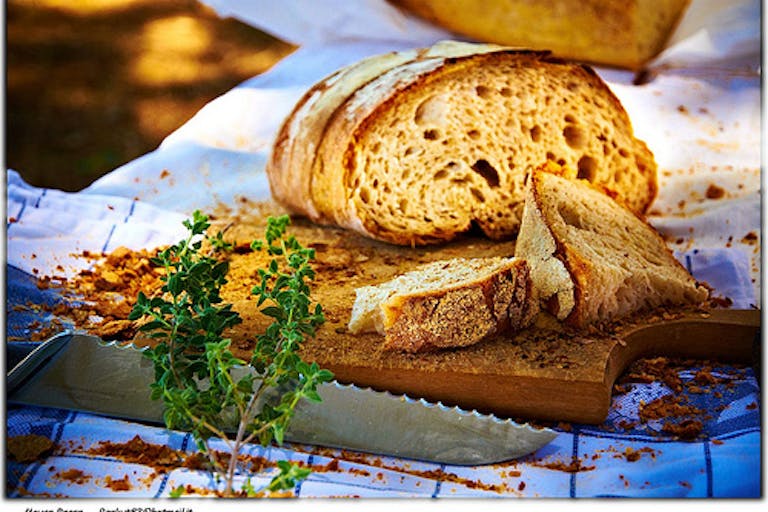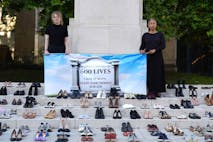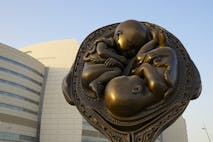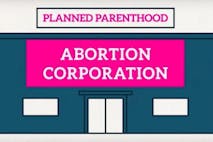
Chilean voters elect pro-life candidate Jose Antonio Kast as president
Bridget Sielicki
·
Bread and Roses…and abortion?
In 2008, I met with some students from the University of Florida to pray outside an abortion mill that I had never visited before in Gainesville, Florida. I was just passing through on my way to another university, where I was doing pro-life work with Students for Life of America.
It was hard to figure out where I was allowed to park, because the abortion center was actually just a house in an area that mixed residential and business locations in a rather strange way (as college towns are apt to do). It wasn’t until I met up with the group of college students gathered outside on the sidewalk that I noticed the name on the sign: “Bread and Roses.”
Bread and Roses? I thought to myself. Is this a joke? Am I really at an abortion mill? But as young women started to come and go from the building/house, I realized that it was not a joke: this really was an abortion mill, and it really was called “Bread and Roses.”
For some reason, the name turned my stomach. It was repulsive that a place that ultimately insults women with abortion would take a name that made it sound so woman-friendly (after all, what woman doesn’t like bread, or roses?). “Bread and Roses” sounds like the name of a bed and breakfast to me. Or a French restaurant. Or a boutique. But…an abortion mill?
So I decided to look into the history of the name. I knew there must be something behind it, because no matter how creepy you are, you don’t just arbitrarily name your abortion mill “Bread and Roses.”
It turns out that there are two Bread and Roses abortion mills in Florida. So much for my impression that this was a singular instance of over-the-top abortion craziness. It was double-crazy now. Here’s what I found.
Article continues below
Dear Reader,
In 2026, Live Action is heading straight where the battle is fiercest: college campuses.
We have a bold initiative to establish 100 Live Action campus chapters within the next year, and your partnership will make it a success!
Your support today will help train and equip young leaders, bring Live Action’s educational content into academic environments, host on-campus events and debates, and empower students to challenge the pro-abortion status quo with truth and compassion.
Invest in pro-life grassroots outreach and cultural formation with your DOUBLED year-end gift!
The term “bread and roses” originates from a turn-of-the-century poem by James Oppenheim. Upton Sinclair attributes the slogan to workers who participated in the Lawrence Textile strike in 1911, and who reportedly carried signs saying, “We want bread, but we want roses, too!”
Here’s an excerpt from the poem (thanks, Wikipedia):
As we come marching, marching in the beauty of the day, A million darkened kitchens, a thousand mill lofts gray, Are touched with all the radiance that a sudden sun discloses, For the people hear us singing: ‘Bread and roses! Bread and roses!’ As we come marching, marching, we battle too for men, For they are women’s children, and we mother them again. Our lives shall not be sweated from birth until life closes; Hearts starve as well as bodies; give us bread, but give us roses!
Sensing no obvious connection between the plight of 20th-century factory workers and the abortion business, I was left to continue wondering why those businesses were called “Bread and Roses” – especially since the poem actually refers to women’s children and women mothering their children.
I think the takeaway from my creepy Bread and Roses abortion mill experience may be this: the abortion lobby will do anything to make abortion sound pretty. They have tried different methods of accomplishing this, including using code-words like “contents of the uterus” instead of baby or fetus, so that when a woman visualizes the contents of her uterus being sucked out of her and dumped into a garbage bag, maybe she will be less inclined to imagine the fingers and toes and perfect little body that constituted those contents. They also refer to abortion as “reproductive rights,” and “women’s health care.”
But we aren’t fooled. No matter how abortion supporters label their goods, America is waking up to the reality that the labels don’t change the facts.
Live Action News is pro-life news and commentary from a pro-life perspective.
Contact editor@liveaction.org for questions, corrections, or if you are seeking permission to reprint any Live Action News content.
Guest Articles: To submit a guest article to Live Action News, email editor@liveaction.org with an attached Word document of 800-1000 words. Please also attach any photos relevant to your submission if applicable. If your submission is accepted for publication, you will be notified within three weeks. Guest articles are not compensated (see our Open License Agreement). Thank you for your interest in Live Action News!

Bridget Sielicki
·
Pop Culture
Cassy Cooke
·
International
Cassy Cooke
·
Analysis
Cassy Cooke
·
Analysis
Angeline Tan
·
Analysis
Cassy Cooke
·
Human Interest
Lauren Enriquez
·
Activism
Lauren Enriquez
·
Activism
Lauren Enriquez
·
Activism
Lauren Enriquez
·
Lauren Enriquez
·